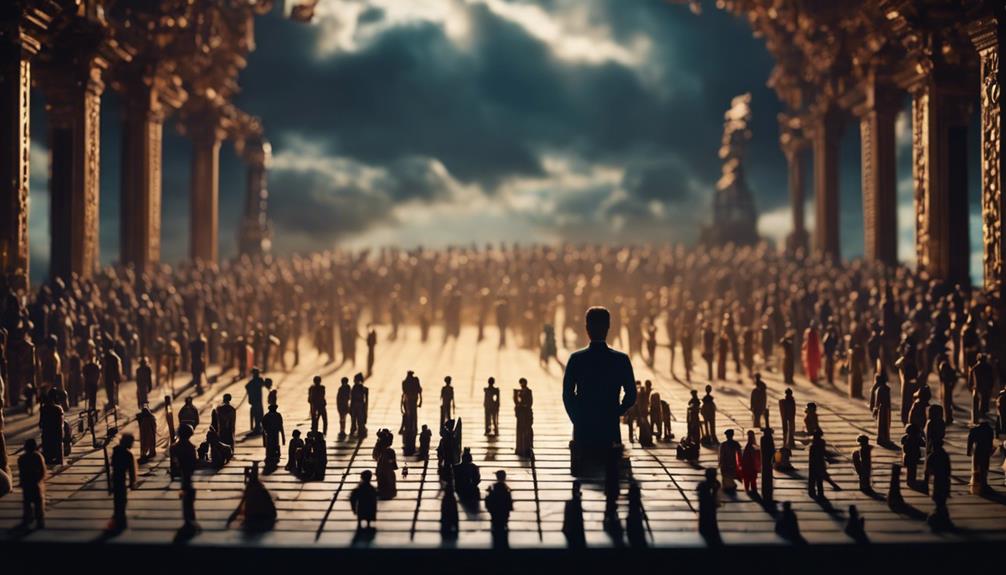Moral Impact of AI Art: 7 Insights
The ethical concerns around art made by computers challenge us to rethink ownership, authenticity, and the future of creativity. This discussion is crucial today, where technology and art intersect more than ever. We are faced with questions that push us to consider who owns an artwork when a computer plays a significant part in its creation. Also, what does authenticity mean in the age of digital creation?
These debates are not just academic; they have real implications for artists, tech developers, and society. Understanding them helps us grasp the bigger picture of how technology is reshaping culture. Reflecting on these insights encourages us to consider unexpected ethical issues and may even change how we view the use of technology in art.
In a world that’s quickly changing, these conversations are vital. They ensure that as technology advances, we don’t lose sight of the values that make art meaningful. Engaging in this dialogue is a step toward navigating the challenges and opportunities the digital age presents.
Key Takeaways
- Ethical debates in AI art question ownership and originality.
- The digital age challenges our views on creativity and its future.
- Engaging in these discussions protects art’s value in tech advancements.
Redefining Artistic Ownership
The emergence of AI-generated art is shaking up traditional ideas about who owns a piece. This new wave of creativity challenges our old rules about authorship and copyright, putting pressure on the need for updates on legal and ethical standards. Now, we’re seeing artwork that isn’t just made by humans but also by machines, leading to big questions about the essence of creativity and where it comes from.
This blend of human and machine talent in art creation calls for a fresh look at intellectual property rights. Our current laws aren’t quite up to dealing with this new reality, highlighting a gap in how we recognize the joint effort of humans and AI in making art. Beyond the dry legal issues, there’s a more profound ethical question about valuing originality and cherishing human creativity as something unique and irreplaceable. As we continue to debate, ensuring that artists’ rights are protected and that human creativity is valued in the AI art world is crucial.
In this new era, it’s clear that both the legal system and our cultural values need to adapt. We must find ways to respect and protect the contributions of humans and AI to the art world.
Authenticity in Creation
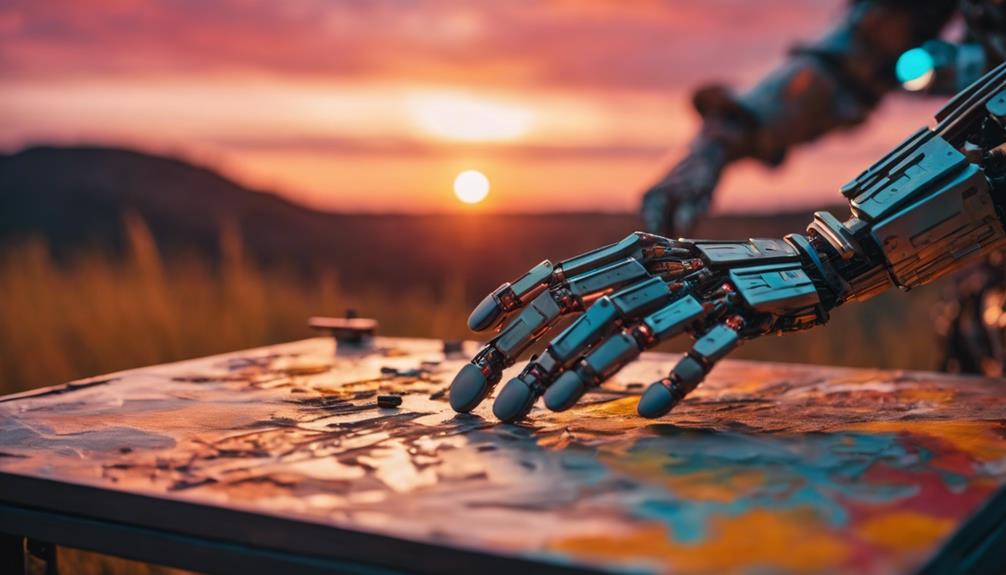
The debate on authenticity in AI art creation centers on the challenging balance between originality and the influence of AI. It highlights a complex area where the intentions of the artist and the role of technology in creating art seem to clash.
This discussion prompts us to think about how we can maintain the artist’s original intentions as machine algorithms become more advanced. These algorithms are changing the way we view creativity and ownership in art.
We’re led to reconsider what true artistic expression means when the lines between human and machine art start to blur.
Originality Vs. AI Influence
As artificial intelligence (AI) makes its way into the art world, conversations are heating up about how it’s changing what we think of as original and authentic art. Here’s what’s at the heart of the debate:
- People are questioning originality when AI plays a role in making art.
- There’s worry over whether art can be considered authentic if it doesn’t have that personal human touch.
- Artists find it hard to stand out when AI can also create art, influencing their unique styles.
- It’s challenging for artists to use AI without losing their creativity and compromising their artistic values.
- The art community often discusses where to draw the line between human art and art created with AI’s help.
These issues show us that the relationship between AI and making art is complex. Understanding how technology changes how art is made and thought about is essential.
Artist’s Intent Preservation
In art, the discussion about originality and the impact of tech innovations has never been more relevant. Artists face the challenge of keeping their vision alive when using advanced digital tools, like AI, to create their work. It’s about finding the right mix of using these tools for creativity while ensuring their ideas and messages shine through. Artists must work closely with AI, guiding it to ensure their work remains true to their original vision.
The key is for artists to be deeply involved in the creative process, even when AI is part of the equation. This involvement ensures the artwork reflects their unique perspective and message, keeping it authentic to their intentions. It’s a way to use AI as an assistant rather than letting it take over the creative process. This balance allows for creating art that stands out in today’s fast-paced digital environment, ensuring that the artist’s voice is not lost but rather amplified by technology.
Impact on Human Artists
The rise of AI art creation has sparked considerable debate on its effects on human artists and their craft. The art community finds itself at a crucial point, wrestling with ethical issues as artworks created by AI become more common. These concerns focus on the possibility of human artists being sidelined, the diminishing emotional depth in art, and the struggle to keep art genuinely authentic. The emergence of AI tools like DALL·E has pushed these discussions further, urging artists to reconsider how they approach their work in a world that’s becoming more and more digital.
Here’s what’s at stake:
- The worry is that AI art might push human artists out of the picture.
- Artists are concerned that art made by AI lacks the emotional connection and personal touch that comes from human creation.
- AI technologies like DALL·E put the spotlight on how human artists could struggle to make a living.
- There’s a fear that using AI too much could limit showing unique personal experiences and viewpoints through art.
- Human artists face the challenge of adapting their creative methods and keeping their art true to themselves as AI becomes a more significant part of the art world.
This situation calls for a thoughtful way to blend AI into art-making, ensuring the unique qualities of human creativity remain central.
Ethical Use of Data
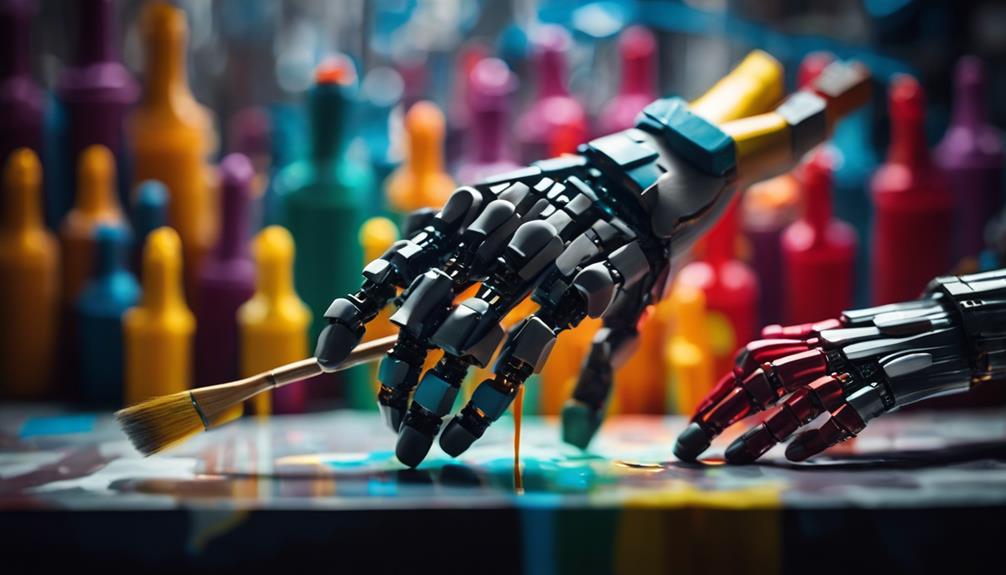
The ethical considerations in creating AI art touch on crucial issues like data privacy, obtaining consent, and the inherent biases in algorithms.
Respecting individuals’ privacy and asking for their permission before using their data in AI art projects is essential. This maintains ethical standards and complies with laws like the GDPR.
Addressing biases in algorithms is equally essential to ensure fairness and uphold the credibility of AI-created art, reflecting the intricate balance between innovation and ethical responsibility.
Data Privacy Concerns
In AI art involving dog breeds, concerns about data privacy come into play due to the heavy reliance on personal information for training algorithms. It’s essential to implement ethical practices to protect this sensitive data. Using real-life dog images for AI art highlights the need to carefully handle such information.
Ethical practices are crucial in managing data to avoid any leaks. Data protection strategies are necessary for artists and developers working on dog-breed AI art projects. Being transparent about how data is used builds trust and meets ethical standards. Following data privacy laws is not just about avoiding legal issues; it’s about respecting the privacy and rights of individuals. Although not the primary focus here, getting permission from users to use their data adds another layer of complexity to data privacy in the context of AI art involving dog breeds.
Consent in Data Usage
Getting consent for using someone’s data in making AI art is crucial. It respects their privacy rights and keeps things ethical.
When collecting data for art, it’s necessary to be open about how it will be used. This means getting a clear yes from people before their information is part of any art project.
Respecting someone’s choice and privacy is critical in making sure the use of their data for art is correct and fair.
Bias in Algorithms
Making sure algorithms in AI art are free from bias is crucial for ethical data use. This means we must carefully examine and fix the human biases that might sneak into AI models because of data that’s not diverse enough.
To ensure AI art is fair and includes everyone, we need to tackle bias in algorithms. Biases in these algorithms might keep old stereotypes and unfair treatment alive in AI-created art. Being transparent about where our data comes from and how we train AI is critical to fighting bias. We also need to ensure we’re using various data to keep our AI models fair. It’s essential to have people check and fix any biases in these models.
Capitalism and Creativity
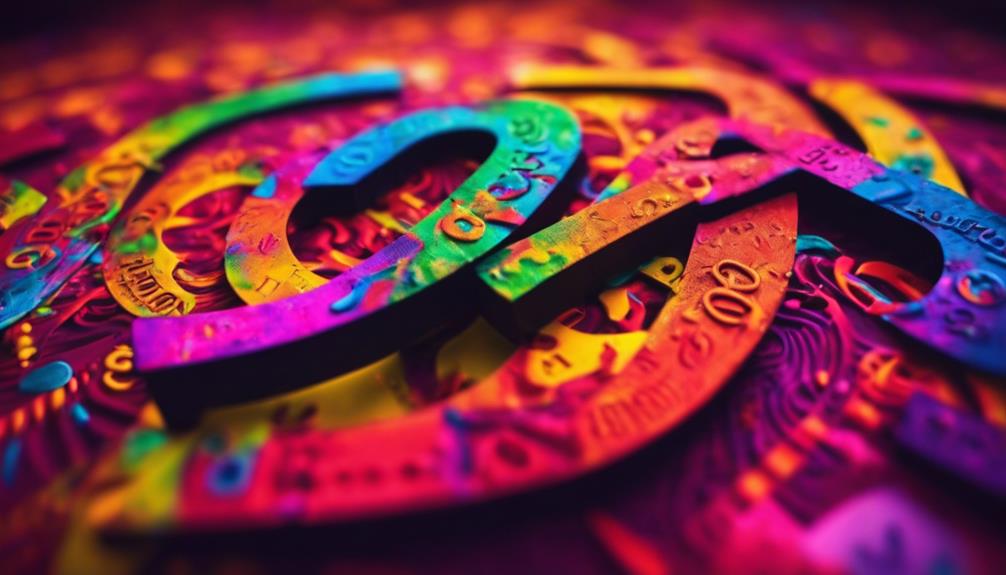
The blend of capitalism and AI in the art world raises tricky questions about how chasing profits might overshadow natural artistic talent. Businesses are getting more involved in the creation and use of AI in art, which leads to worries about AI art becoming more about making money and less about the art itself. This focus on profit can mean that what sells becomes more critical than new and innovative art, which might not be as popular.
Commodification makes us question if the art we’re seeing is truly original or just made to sell. When profit is the primary goal, the unique qualities of art can take a backseat. The push from businesses to use AI in art could make us forget the value of human-created art. There’s a risk that the desire to make money could hurt the honesty of art.
In this situation, capitalist systems’ control over AI art creation could limit how varied and unique art can be. It’s essential to find a middle ground that respects the actual value of art while also seeing the benefits AI can bring.
Societal and Cultural Implications
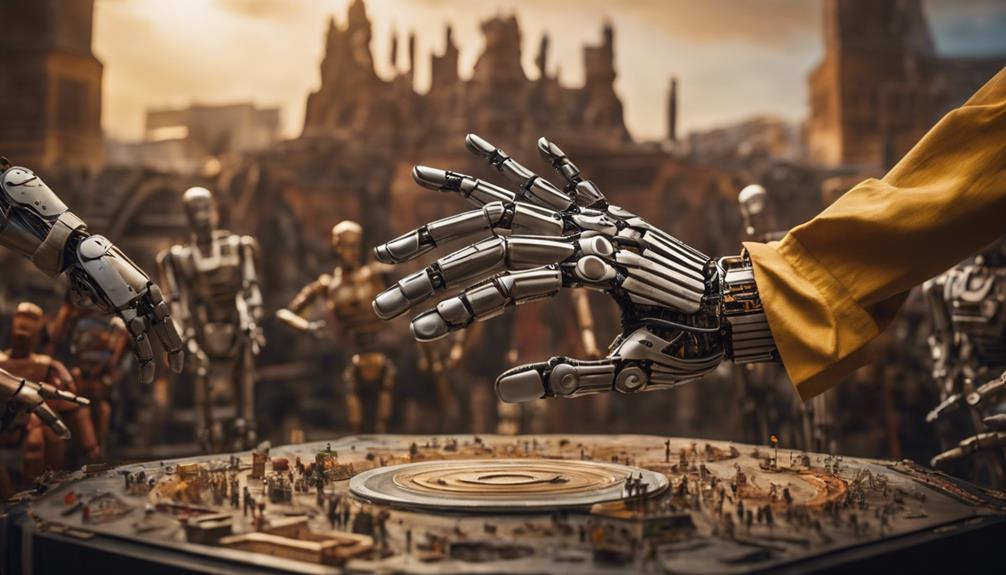
Economic aspects aside, the arrival of AI art is shaking up the art scene, making us rethink what art is and who gets to create it. This new wave of technology-driven art is sparking discussions and sometimes disagreements about its place in society and what it means for culture. As AI art becomes more common, it’s changing how we view artistic skill and originality.
The debate over authorship is heating up because of AI art. It’s hard to tell where human creativity ends and computer precision begins. How society reacts to and accepts AI art will play a significant role in whether it becomes a standard part of our cultural fabric. AI is also changing how we express ourselves culturally, leading to new forms of expression that were previously unimaginable.
However, there’s a tricky side to this: the risk of cultural appropriation. AI’s capability to mimic and mix cultural elements without context or understanding raises severe questions about respecting and preserving diverse artistic traditions. Furthermore, people are questioning whether art made by machines can indeed hold value or meaning, challenging the traditional ways we judge art.
Future of Artistic Expression
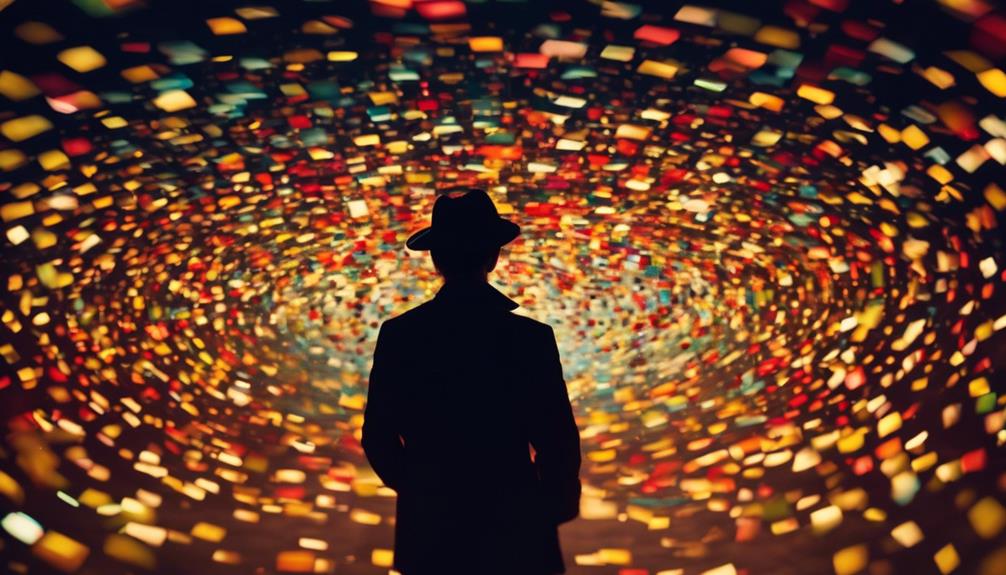
In today’s world, where technology and imagination meet, AI is reshaping how we view and create art. It’s not just a tool anymore; it’s becoming a partner in the creative process. This partnership between human creativity and algorithmic precision opens up new opportunities for expression. It’s changing the rules about what art can be, making us think differently about creativity and the value of art made with AI.
Deep learning algorithms are driving this change, making it possible to create stunning artworks beyond what we’ve traditionally expected. These AI-crafted pieces push the boundaries of art, introducing us to a new phase of innovation and exploration. As AI tools become more integrated into the art world, they prompt us to consider the social implications of this shift, mainly how it affects the link between art and human expression in our digital era.
This evolution in art and technology prompts a rich discussion about the future of creativity. It’s crucial to consider how these AI-driven changes impact not just artists but society.
Frequently Asked Questions
What Impact Does Artificial Intelligence Have on Art?
- AI questions art’s originality, impacting its value.
- It alters how we emotionally connect with art.
- AI reshapes the art industry’s economy and creation methods.
What Are the Moral Values in Artificial Intelligence?
- AI ethics focuses on fairness in decision-making.
- Privacy in data handling is a crucial concern.
- AI impacts societal equality, requiring careful consideration.
What Are the Controversial Topics About AI Art?
- Artists worry about losing their rights to AI creations.
- Authenticity debates challenge the value of AI-made art.
- AI raises concerns over economic fairness and cultural respect.
What Is the Future of AI Art Impact on the Art World?
- AI art is shaping artistic authenticity.
- It challenges creator rights.
- Transforms creative employment.
